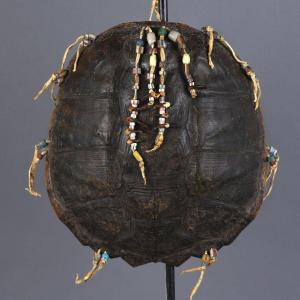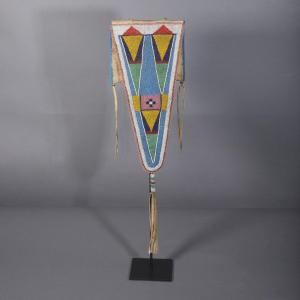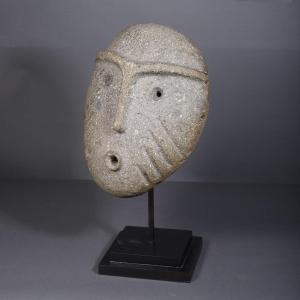This sculpture corresponds perfectly to typical Gandhâra standards, considered to be the first representations of the Buddha in a human form and no longer symbolic. She presents us with a Buddha in his “Bûmisparsha” Mudra posture. In this posture, Buddha touches the ground with the tips of the fingers of his hand; symbolizing the latter's victory against Mara, representation of evil, taking as witness the goddess of the earth Sthâvarâ, attesting to his attainment of Enlightenment.
According to specialists, Gandhara and the Buddhist art associated with it correspond to the region surrounding the Peshawar valley. Under the reign of the Kushans, a dynasty of Iranian origin which dominated a vast empire extending from Central Asia to the Ganges valley, we saw the emergence of two great schools of sculpture, almost contemporary: Mathura in the south, in an aesthetic typically Indian, and Gandhâra, more marked by Hellenism, due to the settlement in this region of descendants of the companions of Alexander the Great.
The beautiful expression "Greco-Buddhist art", invented by Alfred Foucher in 1905, is however a little misleading: we must not forget that there are more than three centuries between the incursion of Alexander the Great in the 4th century BC AD and the Gandhâra school of sculpture.
REGION: Gandhara, Pakistan
MATERIAL: stone
PERIOD: 1st or 2nd century
DIMENSION: 18.5 x 13 x 5 cm
(Base)
inventory number: AS028


































 Le Magazine de PROANTIC
Le Magazine de PROANTIC TRÉSORS Magazine
TRÉSORS Magazine Rivista Artiquariato
Rivista Artiquariato